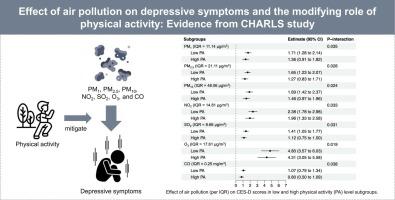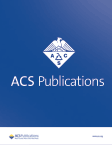Impact of air pollution on depressive symptoms and the modifying role of physical activity: Evidence from CHARLS study
IF 2.9
Q2 PUBLIC, ENVIRONMENTAL & OCCUPATIONAL HEALTH
引用次数: 0
Abstract
The association between air pollution and depressive symptoms has not been thoroughly investigated, and the role of physical activity (PA) is particularly intriguing. Although PA can help alleviate depression, it may also lead to increased inhalation, potentially amplifying the adverse effects of air pollution. A total of 17,332 participants aged 45 years and older from the 2018 wave of China Health and Retirement Longitudinal Study (CHARLS) were included in this study to assess the causal effect of air pollution on depressive symptoms in China and to clarify the role of PA in this relationship. Depressive symptoms were assessed based on the Center for Epidemiological Studies Depression Scale (CES-D). Data on particulate matter (PM1, PM2.5, and PM10), nitrogen dioxide (NO2), sulfur dioxide (SO2), ozone (O3), and carbon monoxide (CO) were retrieved from the ChinaHighAirPollutants (CHAP) dataset. PA levels were measured using a standardized questionnaire and classified into low and high categories. An instrumental variable (IV) method was used to estimate the causal effect of air pollution on depressive symptoms. Effect modification by PA was further analyzed. The IV estimates showed that all the air pollutants had significant adverse effects on depressive symptoms, with per IQR increase in PM1, PM2.5, PM10, NO2, SO2, O3, and CO associated with 1.57 (95% confidence interval (CI): 1.15, 1.99), 1.49 (95% CI: 1.10, 1.89), 1.71 (95% CI: 1.26, 2.17), 2.22 (95% CI: 1.62, 2.81), 1.30 (95% CI: 0.96, 1.65), 4.67 (95% CI: 3.37, 5.98), and 0.97 (95% CI: 0.71, 1.22) units increase in CES-D scores, respectively. The level of PA significantly modified this association, with higher PA levels mitigating the adverse impact of air pollution on depressive symptoms.

空气污染对抑郁症状的影响以及体育锻炼的调节作用:来自 CHARLS 研究的证据
空气污染与抑郁症状之间的关系尚未得到深入研究,而体育锻炼(PA)的作用尤其引人关注。虽然体力活动有助于缓解抑郁,但也可能导致吸入量增加,从而有可能放大空气污染的不利影响。本研究纳入了中国健康与退休纵向研究(CHARLS)2018 年的 17332 名 45 岁及以上参与者,以评估中国空气污染对抑郁症状的因果效应,并阐明 PA 在这种关系中的作用。抑郁症状根据流行病学研究中心抑郁量表(CES-D)进行评估。颗粒物(PM1、PM2.5 和 PM10)、二氧化氮(NO2)、二氧化硫(SO2)、臭氧(O3)和一氧化碳(CO)的数据来自中国高空气污染物(CHAP)数据集。PA水平通过标准化问卷进行测量,并分为低PA和高PA两类。采用工具变量(IV)法估计空气污染对抑郁症状的因果效应。并进一步分析了 PA 的效应修正。IV估计结果显示,所有空气污染物都对抑郁症状有显著的不利影响,PM1、PM2.5、PM10、二氧化氮、二氧化硫、臭氧和一氧化碳的IQR每增加1.57(95%置信区间(CI):1.15,1.99)、1.49(95% 置信区间:1.10,1.89)、1.71(95% 置信区间:1.26,2.17)、2.22(95% 置信区间:1.62,2.81)、1.30(95% 置信区间:0.96,1.65)、4.67(95% 置信区间:3.37,5.98)和 0.97(95% 置信区间:0.71,1.22)个单位的 CES-D 评分增加。PA水平明显改善了这种关联,PA水平越高,空气污染对抑郁症状的不利影响就越小。
本文章由计算机程序翻译,如有差异,请以英文原文为准。
求助全文
约1分钟内获得全文
求助全文
来源期刊

ACS Chemical Health & Safety
PUBLIC, ENVIRONMENTAL & OCCUPATIONAL HEALTH-
CiteScore
3.10
自引率
20.00%
发文量
63
期刊介绍:
The Journal of Chemical Health and Safety focuses on news, information, and ideas relating to issues and advances in chemical health and safety. The Journal of Chemical Health and Safety covers up-to-the minute, in-depth views of safety issues ranging from OSHA and EPA regulations to the safe handling of hazardous waste, from the latest innovations in effective chemical hygiene practices to the courts'' most recent rulings on safety-related lawsuits. The Journal of Chemical Health and Safety presents real-world information that health, safety and environmental professionals and others responsible for the safety of their workplaces can put to use right away, identifying potential and developing safety concerns before they do real harm.
 求助内容:
求助内容: 应助结果提醒方式:
应助结果提醒方式:


